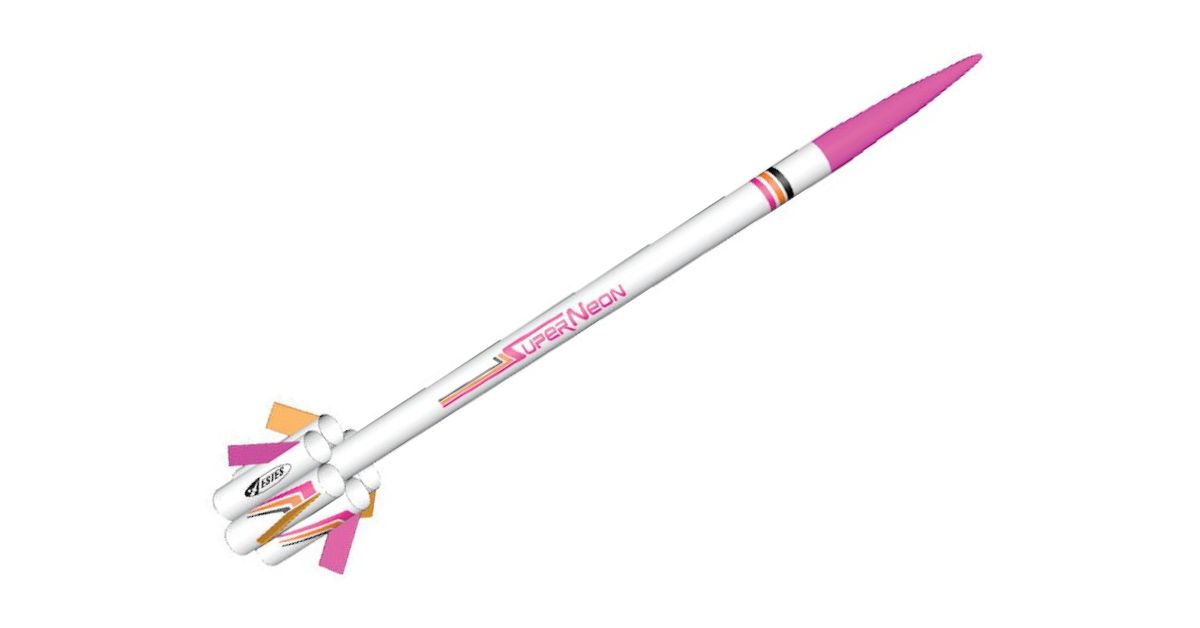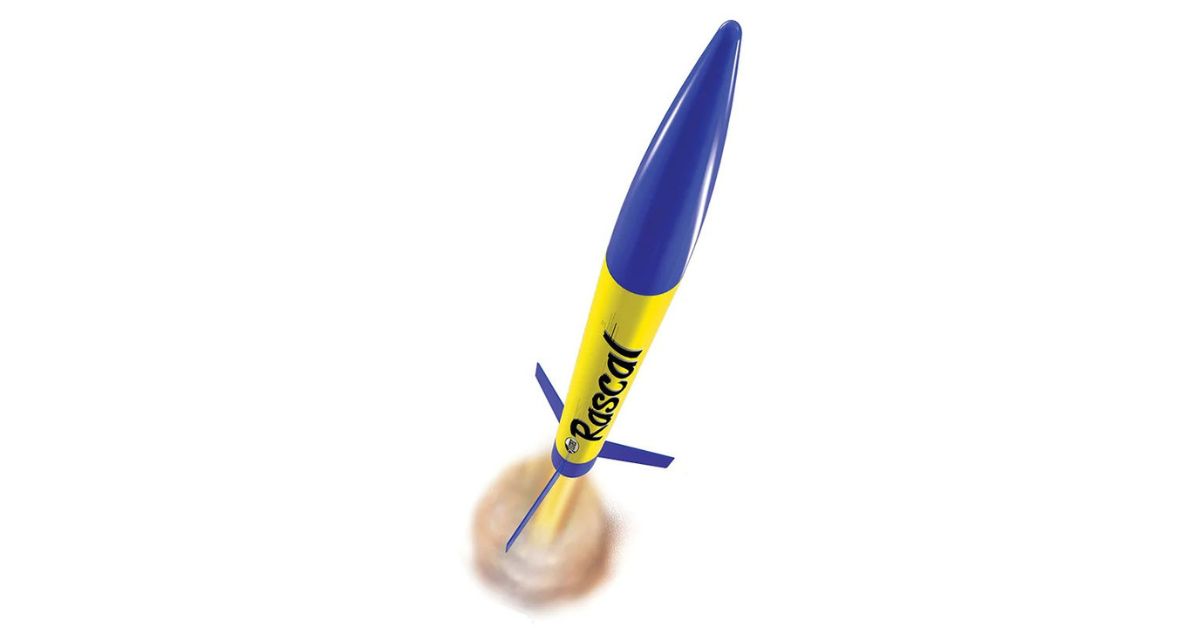Launching a model rocket and watching it soar can spark excitement and curiosity in just about anyone. However, knowing how high your rocket climbed is almost as important as the launch itself. This blog will guide you through how to calculate a model rocket’s altitude so you have everything you need to experience a fully rewarding rocket launch.
Why Calculate Altitude?
Before you build your own altimeter or break out the protractors, it’s worth thinking about why measuring altitude matters. Calculating how high your model rocket flies isn’t just about bragging rights. It helps you do the following:
- Deepen students’ understanding of trigonometry and physics in action
- Compare different rocket designs and engine strengths
- Build experiments around wind, drag, or weight
- Instill data collection and problem-solving skills
Midwest Model Supply has bulk model rockets at various skill levels, so you can choose whichever type meets your students’ needs.
Using Simple Trigonometry To Measure Height
Most model rocket launches happen in open fields under big skies, making classic trigonometry possible and highly teachable. To get started, you’ll need a few key materials and some preparation.
What You Need
- Two or more observers spread apart at measured distances from the launch site
- Two angle-measuring tools (protractors with weighted strings or digital inclinometers)
- Notebooks and pencils
- A tape measure or measuring wheel
- Calculator
Step 1: Mark Out Your Observation Points
Start by choosing your launch pad. Place Observer A at a set distance (like 100 feet or 30 meters) directly away from the pad. Place Observer B the same distance away but at a marked angle to form a triangle with the pad.
Record these positions carefully, using stakes or cones to mark each spot and measure the distance between them precisely. The more accurate the base measurement, the more precise your result.
Step 2: Track the Rocket’s Peak
Once you launch, both observers must follow the rocket’s path as steadily as possible. When it reaches peak altitude (apogee), each observer will record the angle between the ground and the rocket at its highest point. For manual protractors, a string weighted with a washer can act as a simple pointer.
Step 3: Do the Math
Let’s say you have two observers (A and B) set 100 feet apart. Observer A directly faces the launch site, and both use their protractors to measure the angle of the rocket at the peak (Angle 1 from A and Angle 2 from B).
You can use the Law of Sines for a triangle to figure out the rocket’s maximum altitude:
- Calculate the baseline distance (the distance between A and B)
- Use the measured angles to complete the triangle
- Apply this formula:
Height = [baseline distance × tan(angle A) × tan(angle B)] ÷ [tan(angle A) + tan(angle B)]
Using your calculator, plug in the numbers to find an altitude. If you’re working with students, encourage them to try calculations by hand or with scientific calculators to reinforce the math lesson.
Want to simplify? Use just one observer, placed a known distance from the pad, to estimate altitude. Measure the angle to apogee and apply this formula:
Height = distance × tan(angle)
Keep in mind this method is less accurate as it assumes the rocket rises directly above the launch pad and doesn’t drift sideways in the wind.

Building and Using a Simple Altitude Tracker
You don’t need to buy expensive equipment to get reliable measurements. Constructing and using your own altitude tracker combines creativity, STEM learning, and practical skill-building. Follow along to learn how to make a protractor altitude tool.
Necessary Materials
- Cardboard or thick paper
- A standard protractor
- Drinking straw
- Fishing line or string
- Small washer or nut to add weight
- Transparent tape
Assembly Steps
- To guarantee ample sturdiness, attach a protractor to a piece of cardboard
- Tape a straw along the flat edge of the rocket
- Tie the string to the protractor’s center point and attach the weight at the other end
- Make sure the string hangs freely and lines up with angle measurements
- Before launch day, practice sighting through the straw at distant objects
How To Use
At the launch, stand a known distance from the pad. Watch through the straw and tilt the tool until you’re looking at the highest point the rocket reaches. Read the angle where the string crosses the protractor. To find your altitude, plug this angle and your distance into the formula above.
Digital Solutions With Altimeters and Smart Devices
Digital tools can make altitude measurement even more precise, especially when you’re running multiple launches or want quick and repeatable results.
Electronic Altimeters
Pocket-sized rocket altimeters are widely available, and some are surprisingly affordable. Here’s how to use them:
- Place the device inside your rocket before launch
- Launch your rocket as usual
- Recover the rocket
- View the altimeter to see the maximum height your rocket reached
If you want easily chartable data or to compare findings across multiple launches, these devices are ideal.
Smartphone Apps and Cameras
Some smartphone apps attempt to calculate altitude using onboard sensors or by analyzing a rocket’s trajectory on video. On the other hand, some ask you to film the launch, mark the rocket’s position frame by frame, and then input your distance from the launch pad.
While not always perfectly accurate, these tools make for another great integration of digital literacy into your launch event.
Data Collection
Whichever digital tool you choose, make sure to back up your data. Consider sharing results with your group and even challenging them to refine designs to go higher next time!

Troubleshooting and Maximizing Accuracy
Even with the best planning, a few common issues can make your altitude tally less accurate. Follow these tips to get the most reliable results:
- Wind drift can move your rocket away from a straight vertical flight, so try launching on calmer days or using two observers to triangulate more accurately.
- For first-timers, errors in angle measurements are common. Practice with your tools and do a few test runs before the main event.
- Changes between observers and the launch site can introduce discrepancies, so use a level launch area whenever possible.
- Tracker calibration is worth a double-check. To guarantee accuracy, compare your protractor tracker’s readings against known angles.
If you have enough people, use multiple trackers at different positions and average their altitude results for a final figure.
Take Your Launches Higher
Model rocketry inspires creativity and curiosity in learners of all ages. Now that you know how to calculate a model rocket’s altitude, you can unlock dozens of opportunities for discovery, science, and a dash of friendly competition. Next time you send a rocket skyward, remember this essential advice for calculating altitude correctly.


